Case 7
- Reed’s Calligraphic Hand
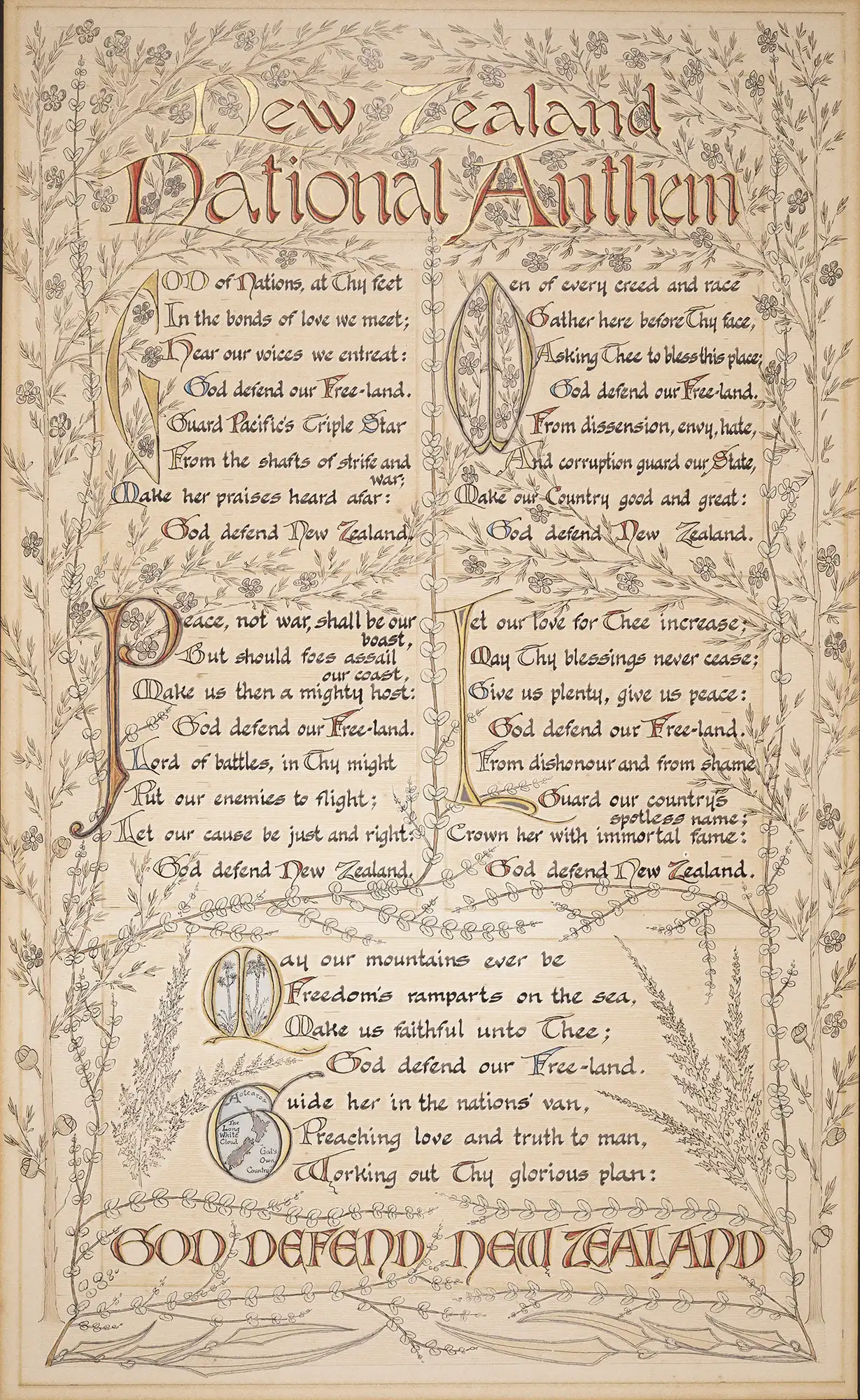
“God defend New Zealand” words by Thomas Bracken written in A.H. Reed’s calligraphic hand, ca. 1920s.
Reed’s interest in calligraphy emerged during his time in the typewriter business in the early 1900s. He admired the medieval scribes who laboured to produce the beloved hand-written Bibles and liturgical works which he began to collect in 1919. He subsequently developed considerable skill in the craft of lettering and illuminating manuscripts, and utilised double or occasionally triple columns in the manuscript style.
Reed also applied his calligraphic skills in embellishing his treasured autograph letter albums. Examples of these will be displayed in a second exhibition focussing on his book collections and donations, A Living Memorial: Alfred Reed’s Legacy to Dunedin, opening on 14 November.

“God defend New Zealand” words by Thomas Bracken written in A.H. Reed’s calligraphic hand, ca. 1920s.
Open image in new window
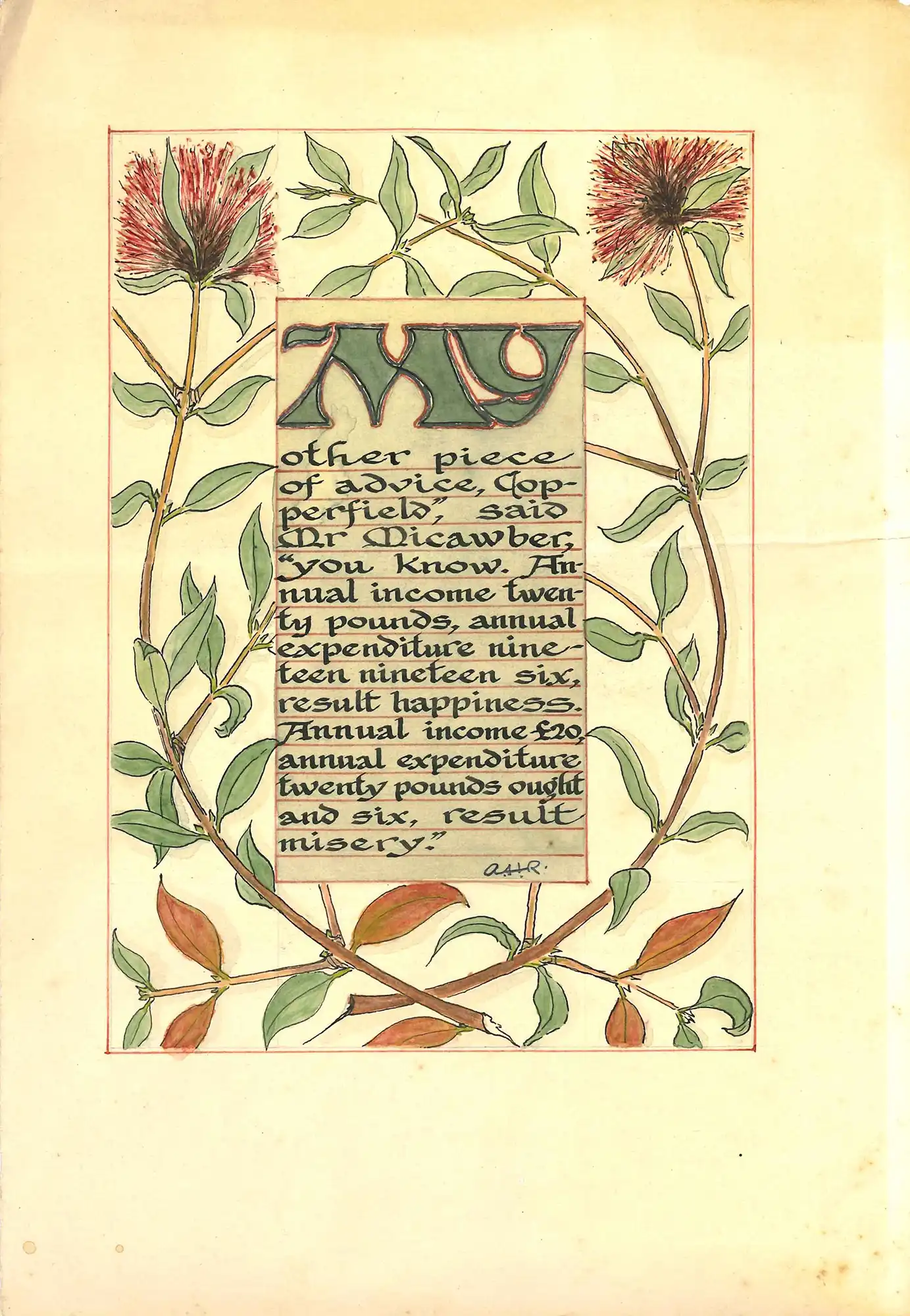
Calligraphic piece by A.H. Reed featuring quote by Micawber from David Copperfield, ca. 1920s.
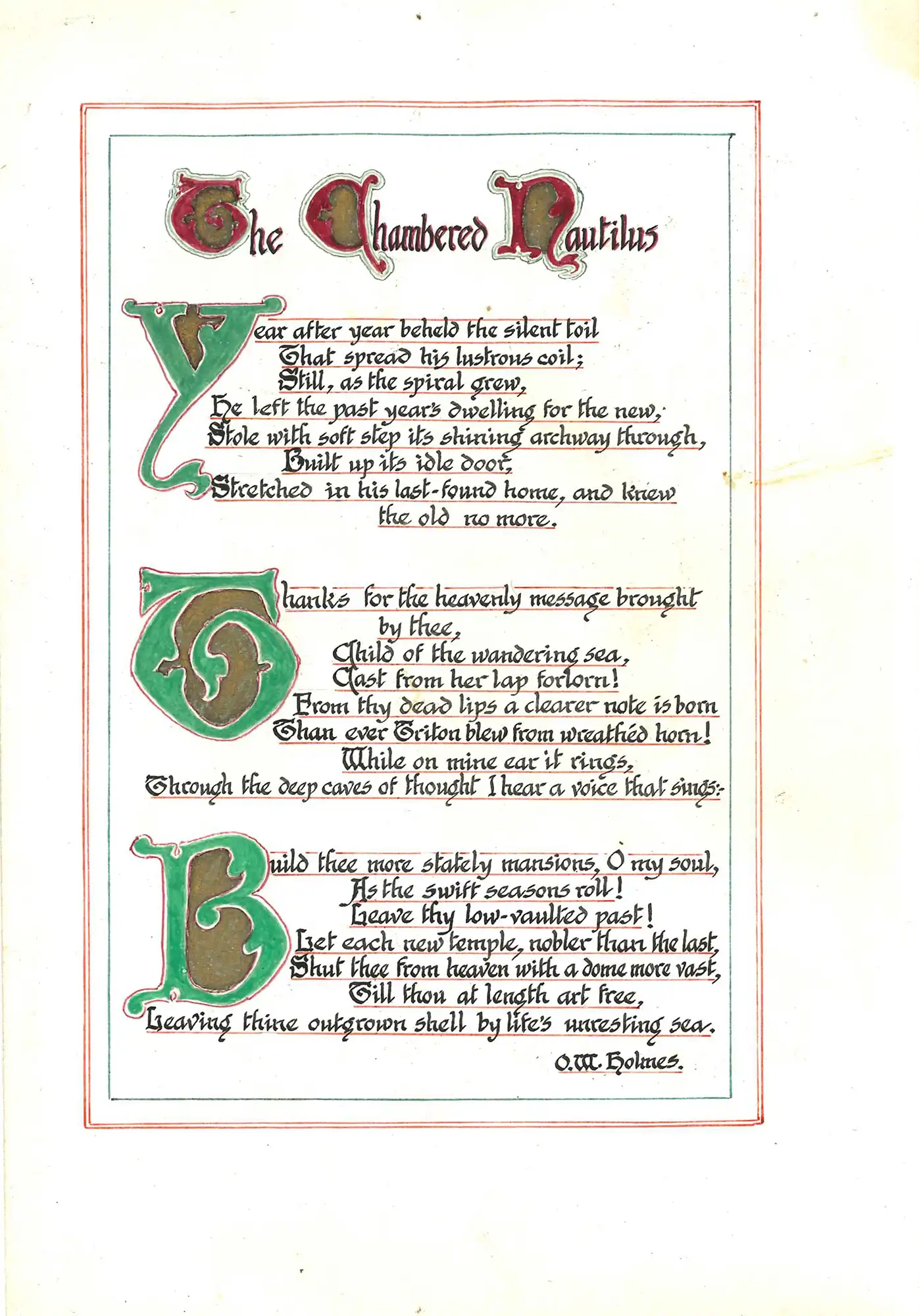
Calligraphic piece by A.H. Reed featuring The chambered nautilus by Oliver Wendell Holmes, ca. 1920s.

Calligraphic piece by A.H. Reed featuring The chambered nautilus by Oliver Wendell Holmes, ca. 1920s.
Open image in new window
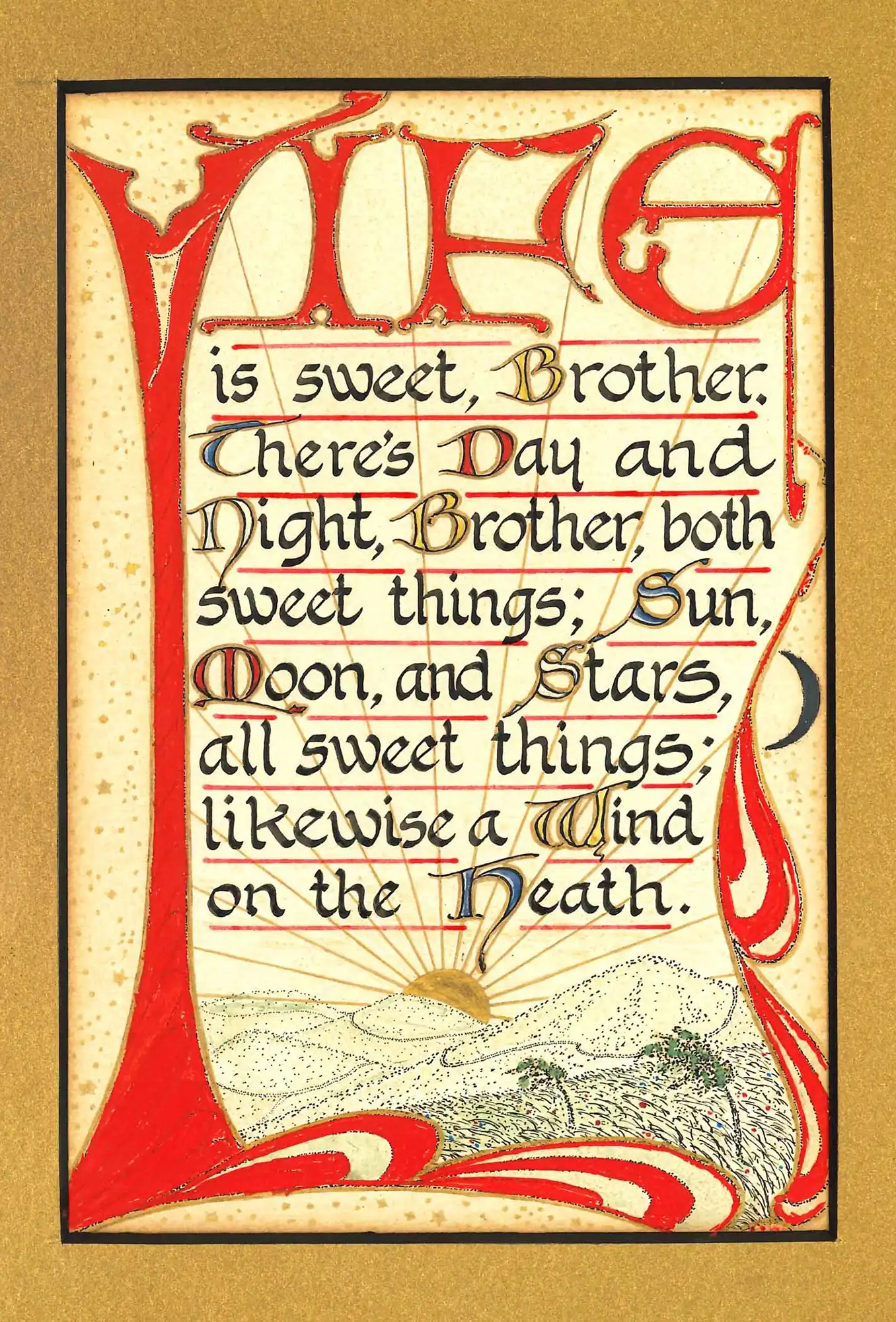
“Life is sweet” original calligraphy by A.H. Reed, ca. 1920s.
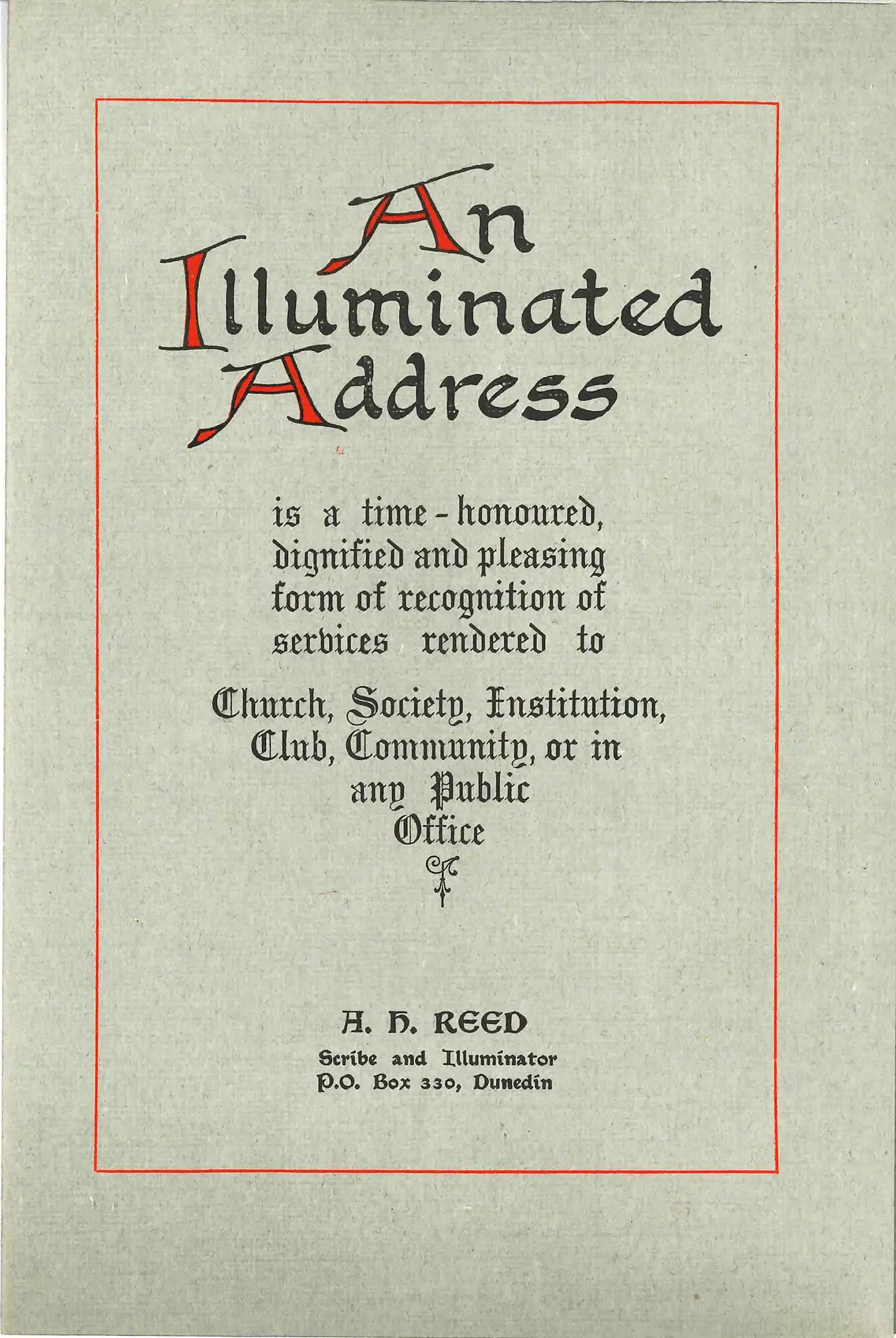
Pamphlet advertising “An illuminated address” issued by A.H. Reed, ca. 1919.
Needing to rehabilitate himself back into civilian life, A.H. Reed for the second time considered Nelson as a potential destination for starting a similar business to his former one. But with the depressed state of the property market, the Reeds deferred the idea of selling their Belleknowes home.
Meanwhile, as a temporary expedient, Reed had acquired some skill in making embossed copper nameplates for houses and engaged in the typing of soldiers’ letters, to which he added calligraphic penwork. He also promoted his skills in creating an ‘illuminated address’ which he described as a “time-honoured, dignified and pleasing form of recognition of services rendered” to diverse public institutions.
This was the backdrop when one day in 1919, out of the blue, Magnus Johnson asked Reed if he would care to buy back the Sunday School Supplies Store.
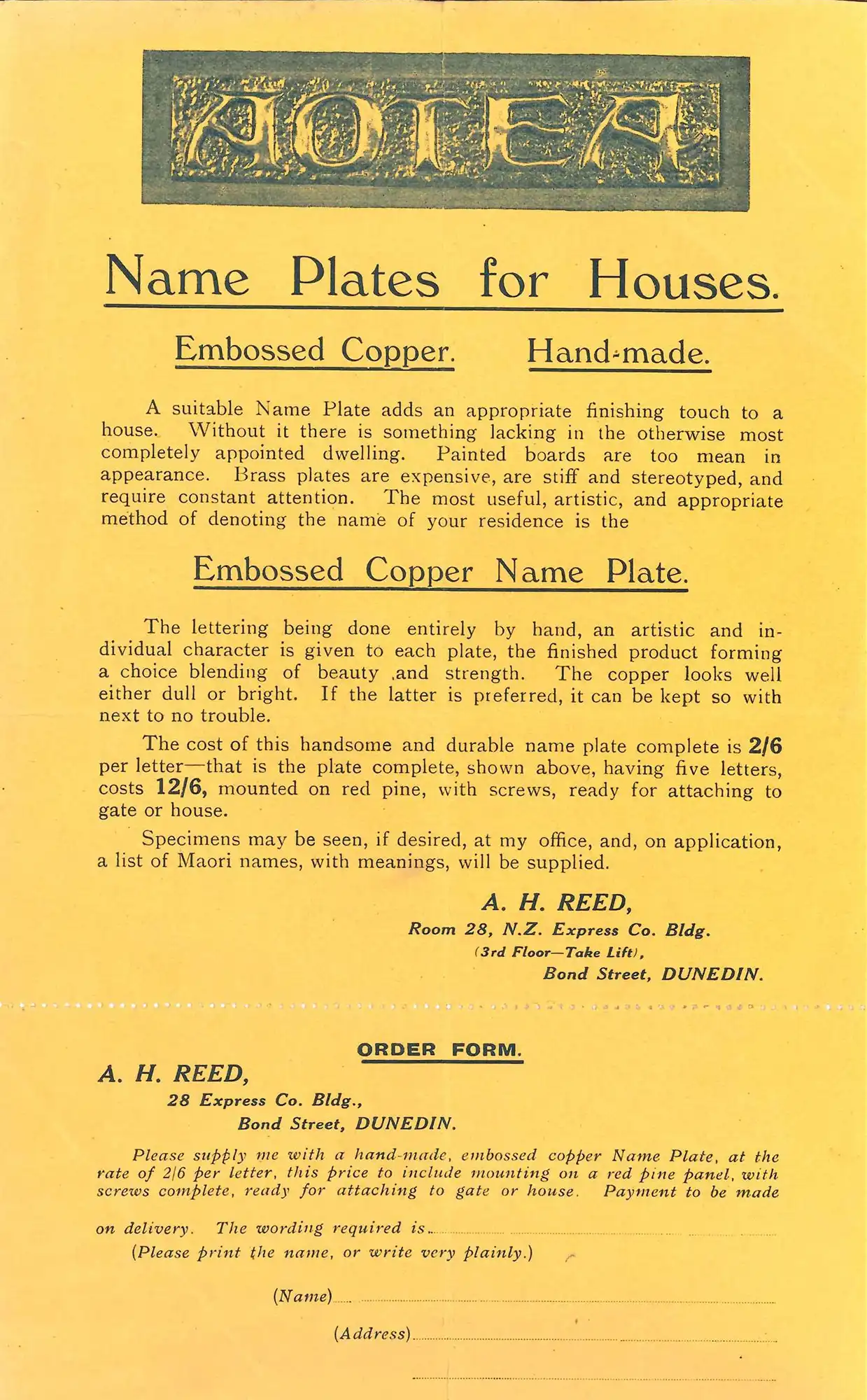
Pamphlet advertising “Name plates for houses” in embossed copper issued by A.H. Reed, ca. 1919.

Pamphlet advertising “Name plates for houses” in embossed copper issued by A.H. Reed, ca. 1919.
Open image in new window
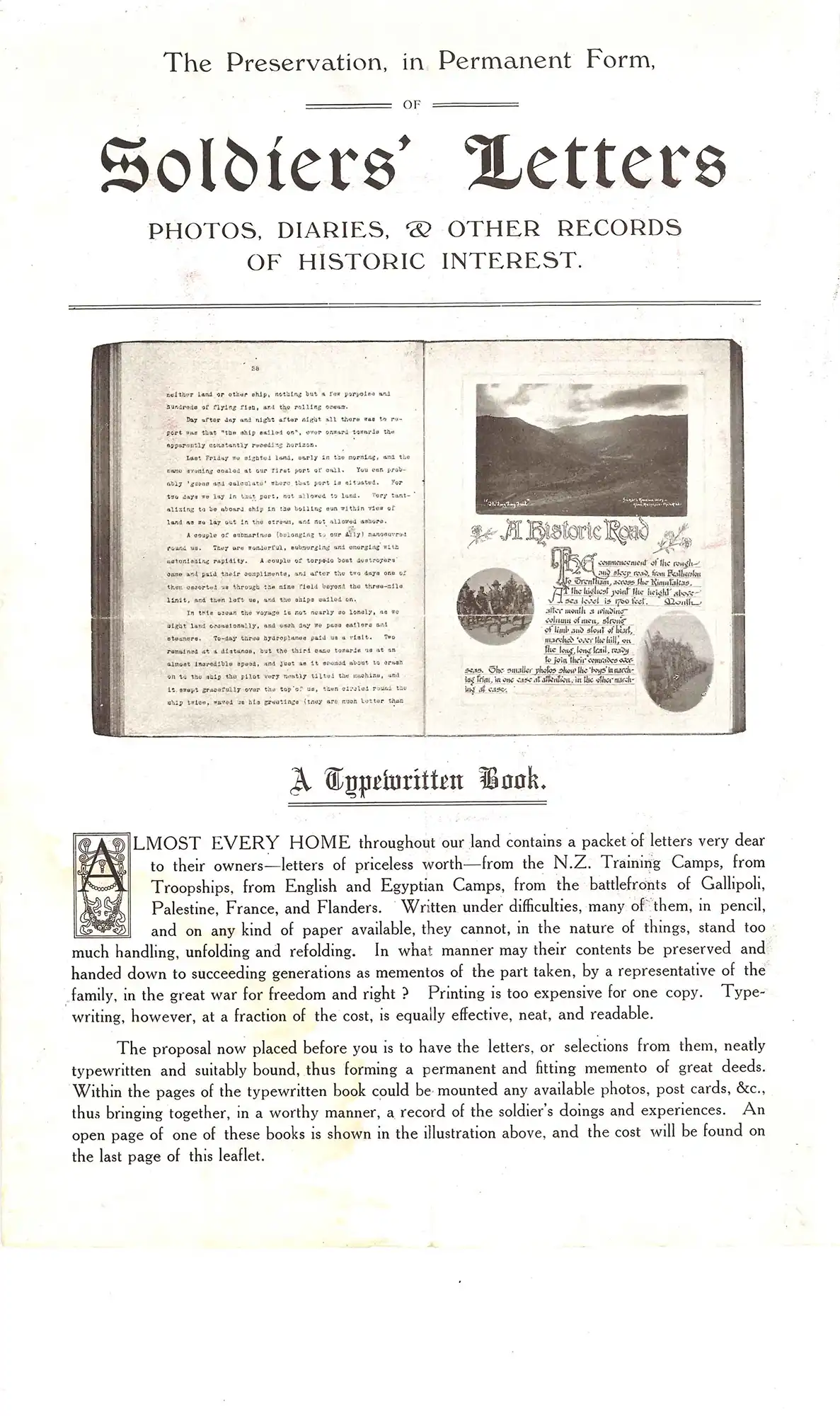
Pamphlet advertising “The preservation in permanent form of soldiers’ letters” issued by A.H. Reed, ca. 1919.

Pamphlet advertising “The preservation in permanent form of soldiers’ letters” issued by A.H. Reed, ca. 1919.
Open image in new window






